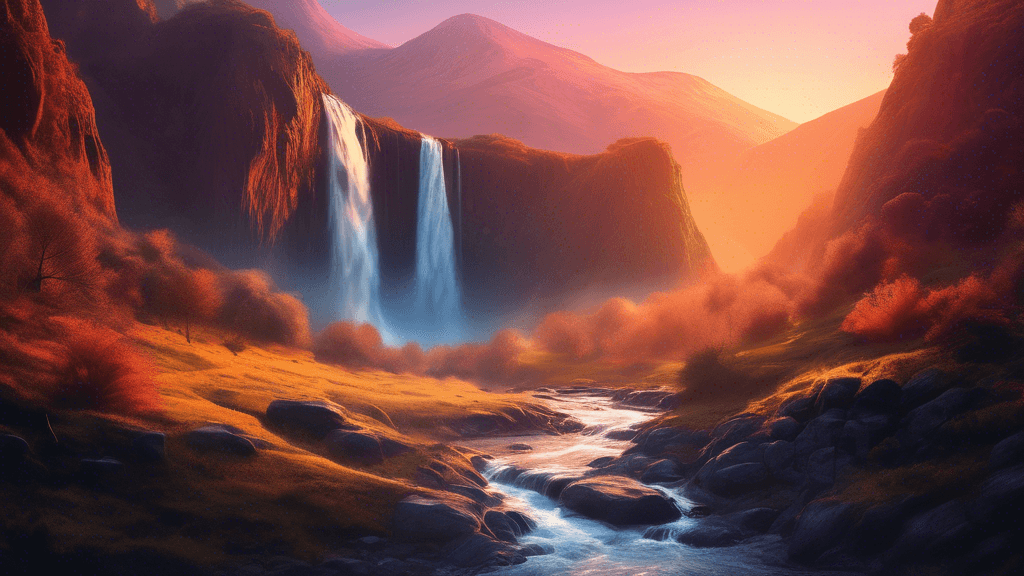
Whispers and Roards: Exploring Silence and Sound in Landscape Photography
Share
The Intriguing Interplay of Silence and Sound in Landscape Photography
Landscape photography transcends mere images of serene sunsets and rugged mountains. It is about capturing both the essence and the atmosphere of a place. How often do we consider the roles of silence and sound when we gaze upon these photographic depictions of nature? This blog aims to delve into this less explored aspect, exploring how the auditory elements captured or implied in a landscape photograph can significantly affect our perception of the scene.
Understanding the Concept of Silence and Sound in Photography
At first glance, the idea of incorporating sound into a visual medium like photography might seem contradictory. After all, photographs themselves are silent. However, the concept of silence and sound in photography is more about the mood and the emotion that these elements suggest. But, what precisely are these auditory facets, and how can they bring added depth to landscape photography?
1. The Role of Silence in Photography
Silence in photography can be powerful and stirring. It invites the viewer to step into the frame and experience the solitude and isolation of nature. Silence can be perceived in the stillness of a misty morning or the untouched snow on a remote landscape. It's the 'absence' that speaks loudly, allowing space for personal reflection.
- Silence can depict tranquility or isolation.
- It enhances the visual elements, such as soft colors and minimalist compositions, creating a calming and meditative mood.
This mood is expertly depicted in Michael Kenna’s photography. He has been quoted as saying, Photography is more about discovery than creation. In his images of stark, minimalistic landscapes, there is a profound sense of stillness that invites the audience to discover the undisturbed beauty and transcendental qualities of silence.
2. The Impact of Sound in Photography
Conversely, the element of sound in landscape photography conveys energy and life. It’s not about capturing an audible sound but rather about suggesting it. Imagine the rustling leaves, the crashing waves, or the distant thunder- these sounds, though unheard, can be felt through a dynamic composition or the perceived motion within the photograph.
- Sound adds a dynamic quality to photographs.
- It can convey motion, from the subtle to the intense, and suggest the environment's ambience.
Ansel Adams, a pioneer in landscape photography, once remarked, There are always two people in every picture: the photographer and the viewer. His photographs of the Yosemite Valley, with their expressive skies and textured terrains, seem to echo with the sounds of nature, creating an interactive experience for the viewer.
Techniques to Capture Silence and Sound in Landscape Photography
How do photographers capture these intangible qualities? Achieving this might be less about technical prowess and more about perception, intuition, and timing.
- Long Exposures: They are fantastic for capturing silence. The blurred motion in a long-exposure photograph of a stream or clouds can convey a tranquil stillness.
- High Shutter Speed: This is ideal for capturing the essence of sound and motion. For instance, the splash of a wave can be frozen in time, suggesting the roar of the ocean.
- Composition and Perspective: The use of leading lines or framing can guide the viewer's attention and enhance the suggested sounds or silence within the scene.
Embracing these techniques requires patience and an understanding that the landscape is not just seen but also felt.
The Emotional Connection
Ultimately, the silent whispers and loud roars captured in landscape photographs forge deeper emotional connections with the viewer. They transform the scene from a mere visual image into a multi-sensory experience that stirs memories and emotions. This connection is not merely about the aesthetic; it's about feeling engrossed, engaged, and part of the natural world depicted in the photograph.
Conclusion
Landscape photography is a profound medium that bridges the visual and the sensory. The interplay of silence and sound in this genre is a nuanced art, enriching the viewer's experience by making each photograph not just a scene to be viewed but an atmosphere to be felt. The ability of photographers to use these elements effectively is what turns a simple photograph into a powerful invocation of nature's very essence.
If you are a photographer, or even just a photography enthusiast, the next time you are out in nature, take a moment to listen. What do you hear? What do you not hear? How can these elements transform your photographic practice or your appreciation of landscape photography?
Whether you capture the silent fog over lakes or the roaring waves of oceans, remember that your image can convey so much more than what meets the eye. It can transport the viewer right into the scene, bridging distances and touching souls.
Are you ready to explore the silence and the sound of the landscapes around you?





